Article
Boston to Montreal: Sailing Under the Tricolor
Author(s):
The 11-day cruise up the St. Lawrence River to Montreal offers all passengers a chance to see the autumn foliage and an opportunity to visit the history of French Canada.
Cruise ships seem to sail everywhere these days. The competition can be fierce to find a new itinerary. How about this one? Sailing in a ship —
flying the French flag —
into the St. Lawrence River in the wake of the great French navigators, Jacques Cartier and Samuel Champlain.
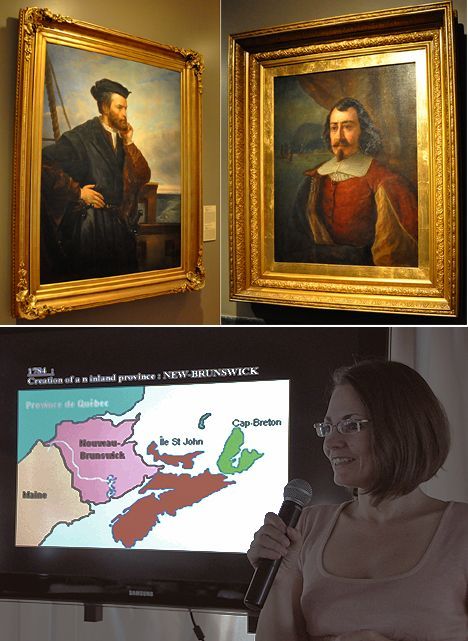
The authors’ photographs of Cartier, left, and Champlain, right, are courtesy of the Chateau Ramezay in Montreal. The 20 or so English-speaking passengers (out of about 200 French) knew of those men. The ship had arranged for historic lectures by a learned medieval scholar, Sophie Favrolt who was both articulate and fluent in English.
Champlain (1567-1635) was born about 75 years after Cartier and although both put their mark on Eastern Canada, Cartier — the solder, sailor —
Le Boreal
and navigator came first. Cartier (1491-1557) was born in Brittany in the northwest tip of France. This was where the Celtic culture originated and Bretons take some pride in that. Our ship, , flies the flag of Brittany, which is also where the ship’s master, Captain Lemaire, another Breton, comes from.
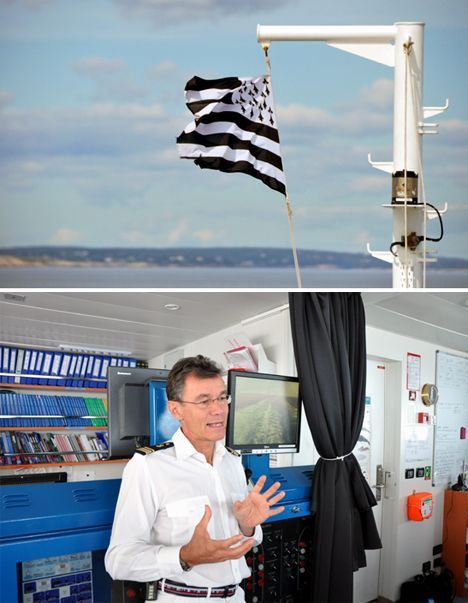
Le Boreal
, designed by French naval architect Jean-Philippe Nuel and built in the Italian Fincanteri shipyard for 264 passengers in 132 staterooms, was voted the Best New Ship of 2010 by the European Cruise Association. Which raises the question, what’s it like?
Well, it’s different, for sure. It’s very avant garde and chic. Why would it not be? The French own those words! The design is so tastefully understated — with photography, touched with red as modern art, on the walls. The sleek silverware is elegant with long-stemmed spoons and forks reminiscent of what grandmother used to impress special guests.
The lounges compliment the design with comfortable white leather chairs in which passengers can relax, read the accounts of what shore excursions are available, sip their cappuccinos — or, if they prefer it, that abominably strong French coffee — and watch the world go by. Mostly a French world because as a frequent cruiser said when passengers were boarding in Boston, “A ship is a living being. You will experience France on this trip.”
The 11-day cruise up the St. Lawrence River to Montreal not only offered all passengers a chance to see the autumn foliage but, in particular, gave the French travelers, many from Paris, an opportunity to visit part of their history, French Canada.
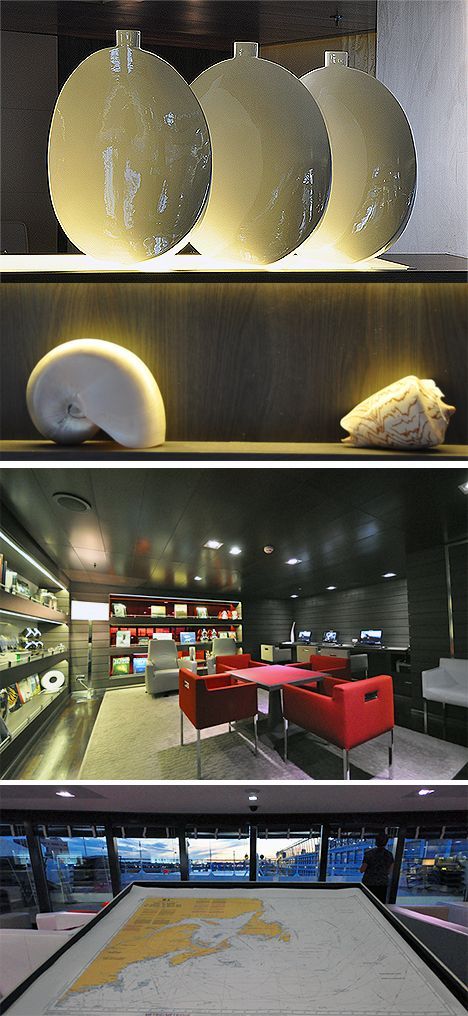
Le Boreal
usually sails with about 60% of its passengers French, but this cruise is so popular with the French that the English-speakers number only about 20. Europeans often claim, with some accuracy, that Americans in their restaurants are too boisterous, even noisy. A cruise like this allows comparisons: Americans are relaxed and gregarious; the French tend to be reserved maybe aloof. If these almost-stereotypes are indeed national characteristics perhaps travel is more fun when the traveler embraces those differences rather than considers them issues.
The ship is small, 466 feet long with a beam of 59 feet and an average speed of 16 knots. It has state-of-the-art navigation equipment, and confident how it embraces the future and the green revolution.
The captain is passionately proud of his ship. He points out there is no noise, no vibration and how easy it is to handle.
“This is not a real job,” he says to the small group visiting the bridge, “For the captain this is really a vacation.” Then he grins and says, “Next year it’s the White Continent. For Antarctica you need backup, two of everything — and the regulations change all the time. There were 49 ships in Antarctica last year; this year 25! But with all our special equipment we are 10 years ahead of the regulations. Ten percent of the cost of sailing our ship is in staying ahead.”
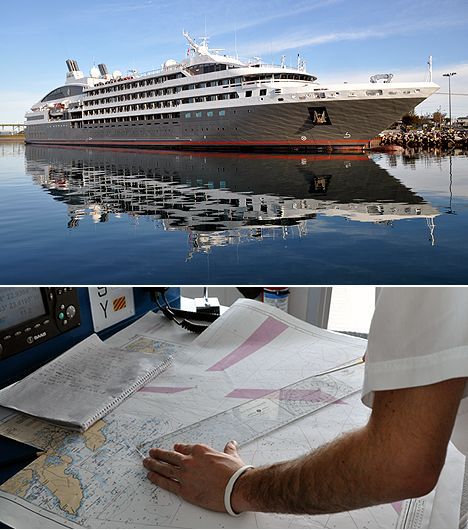
Le Boreal
L’Austral
Boreal
Austral
“But we have to offer something between the Arctic and Antarctica,” he says with a Gallic shrug.
Le Boreal
He looks at one of his crew who is verifying the ship’s position using a classic time-honored method even although has satellite radio and all the latest dynamic positioning systems.
“We don’t want to put all our confidence in instruments,” he says smiling.
Le Boreal
Le Boreal
offers a lot without additional charge: baggage handling from pier to ship and vice versa, all meals on board, bottled water for shore excursions, tea and coffee in the lounge, wines at dinner and entertainment. That is not standard in most cruise lines and some have even started charging for bottled water and also for specialty coffees. Most like do not cover gratuities.
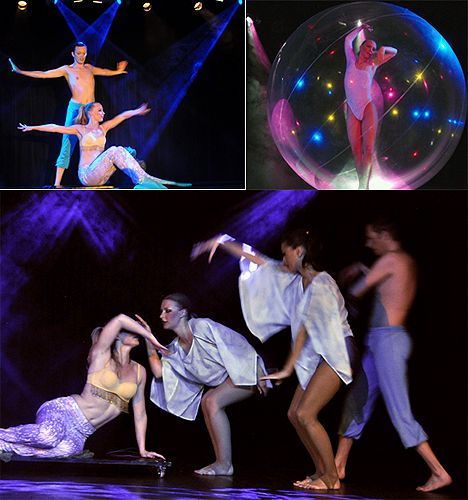
If the quality of Sophie Favrolt’s historical lectures for the English speakers is a delightful surprise so is the excellence of the entertainment in both the lounge and on the stage in the large comfortable theater. It may be patronizing to say how professional the, er, professional entertainers are but this is a 264-passenger ship and what it delivers on the stage with its small group of regular performers is actually superior to what many larger ships offer.
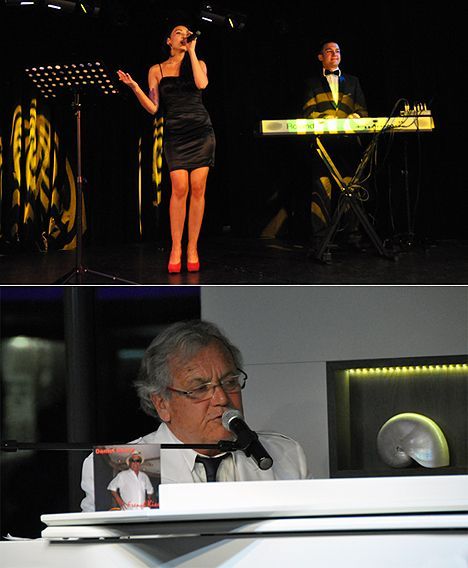
there’s
Inna & Vasily, the young couple who entertain in the lounge and stage with songs in French and English are particularly delightful. But the turn that is startlingly popular with the French passengers — most of whom have already cruised with this ship before — is the ship’s doctor, singing as he plays the piano. Now a possible career change for a physician disenchanted with the medical scene today!
But arguably the best entertainment on a cruise ship is the shore excursion. Our ship’s captain emphasizes that point.
“We are a small ship,” he says, “with a goal to let our passengers escape to enjoy the destination, whereas big ships keep passengers on board to spend money.”
and its sister ship have desalination capability and can recycle fresh water. Both have been designated as “green ships.” means Of the North and , Of the South. The captain’s eyes light up when talks about the expeditions his ship will handle. He believes that is how a cruise company attracts younger passengers. The ports of call are fascinating: the small towns on the East Coast of the United States then the towns and islands in the gulf of the S t. Lawrence River and in the river approach to the historic cities of Quebec and Montreal.
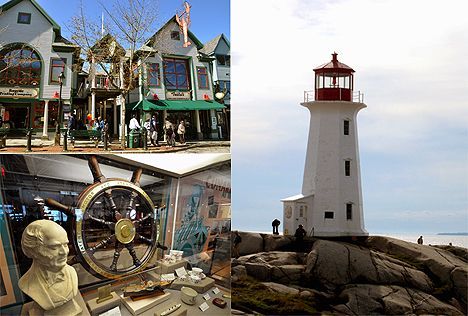
Bar Harbor
Titanic
, Maine comes up first then Halifax, Nova Scotia with its popular attraction Peggy’s Cove and the equally busy Halifax maritime museum. The bodies that were recovered from the disaster were all brought to Halifax as it had the facilities to handle the logistics. A deckchair from the ship stood in the lobby until a local brat was found trying to carve his initials on it. It is now in a glass case!
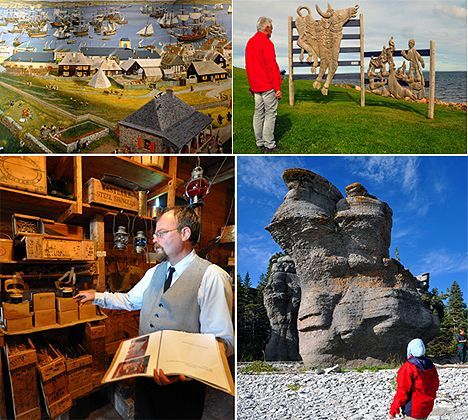
Le Boreal
View From A Warship
View From The Clocktower
now visits places the American passengers have barely heard of. Louisburg fortress, the largest restoration project in North America. In 1744 it had a population of 3,000 and 100 trading ships swung at anchor in the harbor. The interesting paintings by Lewis Parker and — the detail photographed courtesy of Parcs Canada give an impression of life then in this famous seaport.
The Magdalene Islands lie farther northwest with their quaint but picturesque villages, one Laverniere with the second oldest wooden church in North America. Then Perce with one attraction the 1929 village store where the son of the former owner shows visitors the variety of what the store carried including the gas masks sold in World War II. The interest at Havre St. Pierre centers on the limestone monoliths carved from the land by wind and weather.
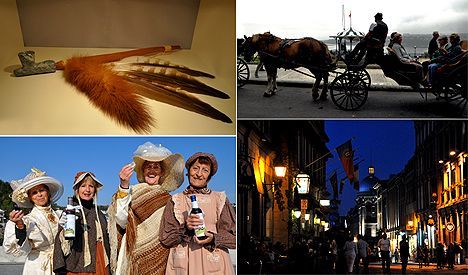
the
Now come two obscure (to Americans) river towns: Tadoussac on the St. Lawrence and Saguenay on the fjord created by the Saguenay River. The fjord was cut by this wide tributary of the St. Lawrence and here the French explorers spent a long winter, many dying from scurvy until the natives showed that the berries on the apple spruce gave protection. American Indian peace pipes are on display in a former trading post in Tadoussac and here in town we discover oldest wooden church in North America. Women in costume show passengers a delightful welcome in Saguenay next day.
.
The Man Who Cried Orange: Stories from a Doctor's Life.
The Andersons, who live in San Diego, are the resident travel & cruise columnists for Physician's Money Digest. Nancy is a former nursing educator, Eric a retired MD. The one-time president of the NH Academy of Family Practice, Eric is the only physician in the Society of American Travel Writers. He has also written five books, the last called
As the ship approaches its last two ports, Quebec and Montreal, visitors prepare for the fun and entertainment of the traditional carriage ride through the upper town in Quebec and next day welcome the time to meander through the streets of Montreal after dinner




